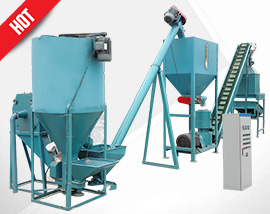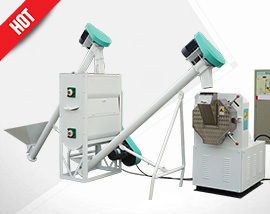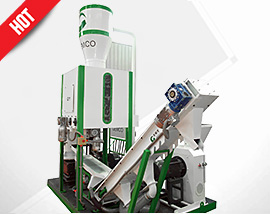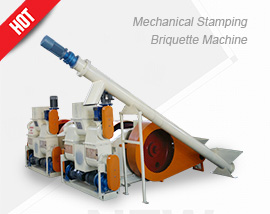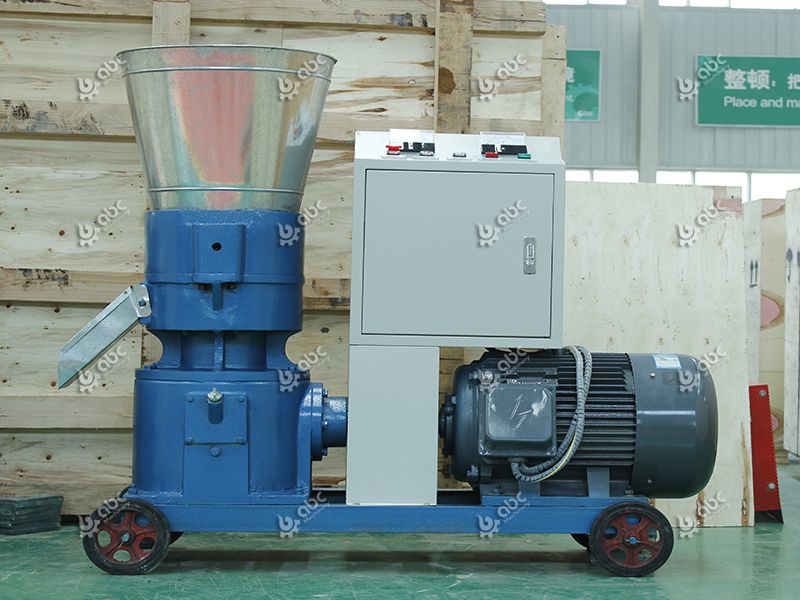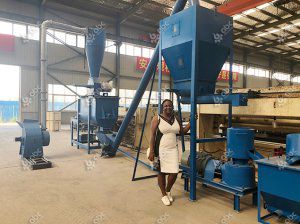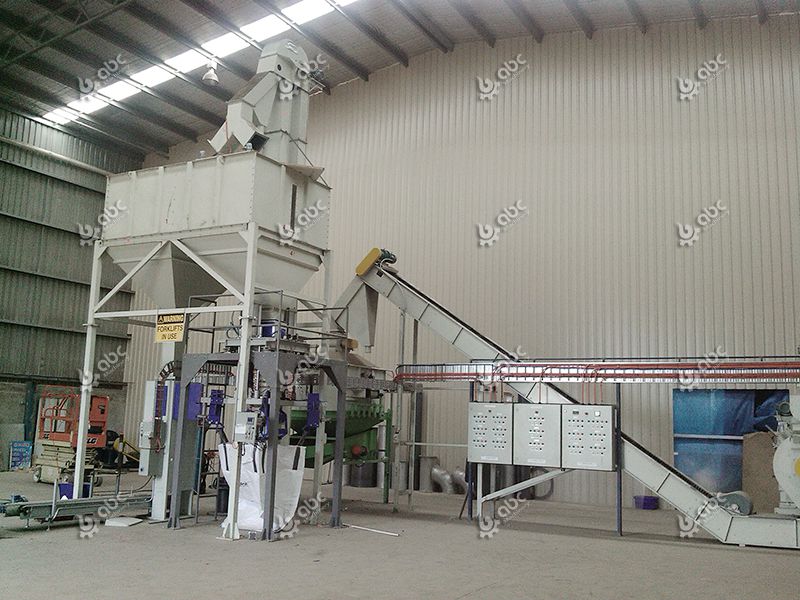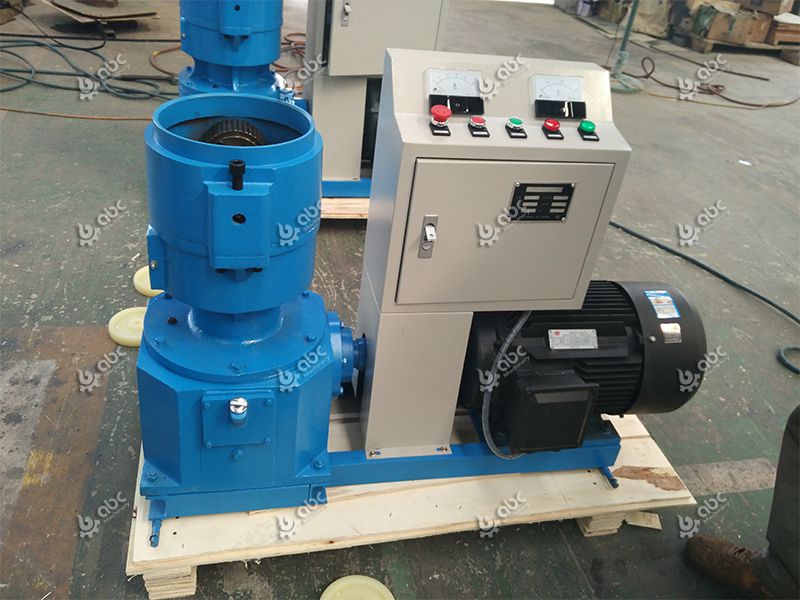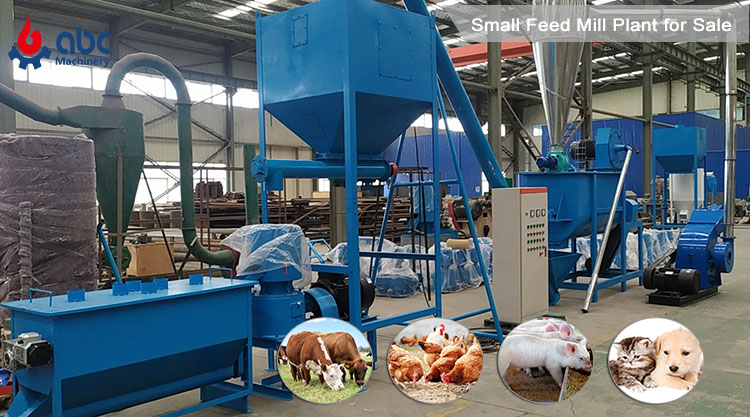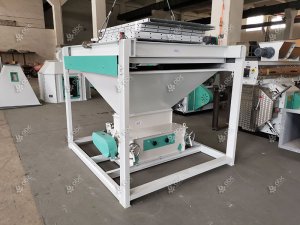Ruminant Animal Feed Production Business Plan
In recent years, more and more farmers who feed cattle, cow, sheep and other animals choose to make their own animal feed by purchasing a small set of ruminant animal feed production plant. How much does it cost to set up an animal feed production plant? What’s the price of small feed processing unit? How to make the best ruminant animal feed production business plan?
HOT Sale Equipment for Starting Ruminant Animal Feed Production Business
This is one of our hot sale equipment for farmers and self-employee who want to start small scale animal feed production business. It is a complete feed processing plant includeing feed crusher, mixer, feed pellet machine, cooler and packager. View to photos below to know more about this small complete set of animal feed pellet making machine. (Feed Making Project: 2 ton/h Cattle Feed Production Machine)
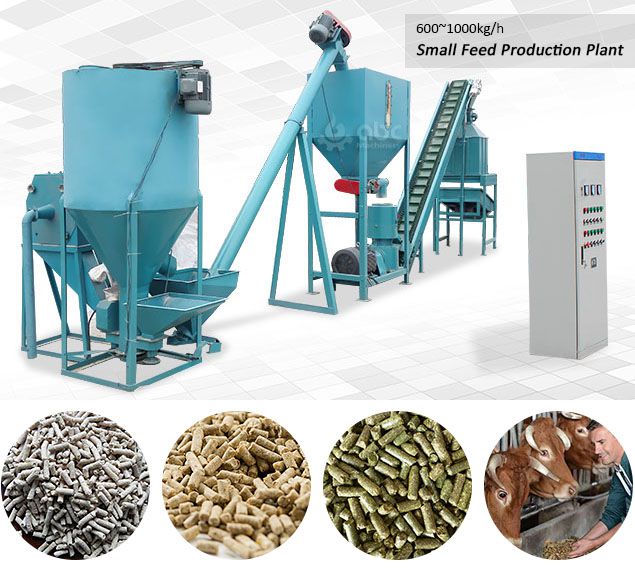
600-1000kg/h Small Cattle Feed Plant Cost
Ruminants are animals that have the digestion system of rumination. Ruminants are mammals, artiodactyla, which includes cattle, cow, sheep, horse, camels, deer, giraffes, alpacas, antelope, etc. Because this kind of animal all has the complex ruminant stomach, can ruminant food, therefore calls the ruminant animal. This set of animal feed production plant can process various of feed materials. Now, let's have a look at the main types of ruminant animal feed. (Related Project: 1 ton/h Small Feed Mill Plant for Cattle & Sheep)
Classification of Ruminant Animal Feed
- Plant Feed: Green fodder, succulent feedstuff and roughage (hay, straw), grain feed (gramineae and leguminosae seeds), grain processing by-product (bran, oil cake, dregs)
- Feed of Animal Origin: skim milk powder, meat and bone meal, blood meal, fish meal, meat, silkworm chrysalis powder, etc.
- Constant Element Feed: salt, stone powder, calcium carbonate powder, bone meal, oyster, etc.
- Trace Element Feed: Copper sulfate, iron sulfate, zinc sulfate, manganese sulfate, sodium selenite, cobalt sulfate, etc.
- Additive feed: Amino acid, vitamin, antibiotic, antioxidant, etc.
The small cattle feed plant cost is closely related to the production output, process design and equipments included in the plant. The equipment cost is about 10,000 ~ 17,000 USD. Jsut feel free to get in touch with us for FREE Quotation List, and get other details of our cattle feed making machine!
Ruminant Animal Feed Production – Application of Soybean Husk
In this part, let’s talk about the nutritional control of ruminant animal feed production, along with the nutritional value, application status and prospects of soybean husk in the field of feed processing.
Straw and dry forage are the main coarse fodder for ruminants or herbivores, especially in winter. Straw and dry forage have high lignin content, but the nutritional composition is very low, which is not good for the growth of the animals. Actually, soybean husk is an ideal feed resource with great potential to promote the growth of animals, shorten the growth cycle.
Soybean Husks VS Straw & Hay for Ruminant Feeding
Soybean husks are the by-product of soybean oil production process, accounting for about 10% of the total volume of soybean and 8% of the total weight of soybean. Soybean husk is mainly the outer coating material of soybean seeds, the color of which is beige or light yellow, obtained by the two processing methods of hot peeling or crushing & sieving. The main components are cell wall and plant fiber, with crude fiber content of 38%, crude protein of 12.2%, calcium of 0.53%, phosphorus of 0.18%, and lignin content of less than 2%. Soybean husk contains a lot of coarse fiber, making it the best choice for feeding ruminant animals when compared with other kinds of roughage forage such as straw and hay.
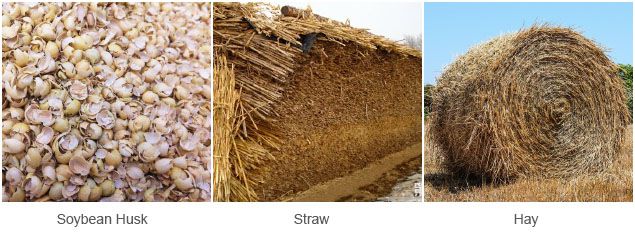
- Soybean Husk: High content of crude fiber, crude protein, calcium, phosphorus other minerals. Low content of lignin. NDF accounted for 63% of soybean husk and ADF accounted for 47%. And the NDF digestibility is up to 95%. Lignin content is only 1.9%.
- Straw: It has poor palatability, low content of crude protein and mineral. Its lignin content is high enough. Read more about straw pellet making machine >>
- Hay: In the drying process of forage grass, most of the nutrients are lost due to chemical and mechanical actions, which results in low utilization rate of ruminant animals. Hay pellet machine for sale >>
Ruminant Animal Feed Production Business Plan
Use Soybean Husks to Reduce Your Feeding Cost of Ruminant Farming
Soybean hush, a digestible fibrous by product, is the best roughage for ruminant farming, especially in winter. In 1994, Weidner added five different kinds of soybean husks to the diet of holstein cows, replacing 25% to 42% roughage and 33% silage with hay, to determine the effects on the digestibility of nutrients and milk production performance of dairy cows. And it turns out that by adding soybean husks, the milk yield and digestibility of neutral fiber were increased by 9% and 14.33% respectively.
Soybean skin also has a certain content of protein and energy which can replace the concentrate supplement of the ruminant animals such as cattle, cow and sheep. It can help reduce your feeding cost.
| Fodder Resource | Soybean Skin / Husk | Corn/ Maize | Wheat Bran |
|---|---|---|---|
| Content of Crude Protein | 12.2% | 10% | 17.1% |
| Net Energy | 8.15 MJ/kg | 8.23 MJ/kg | 6.72 MJ/kg |
Its crude protein content is 12.2%, higher than that of corn (10%), lower than that of wheat bran (17.1%). Its net energy is 8.15mj /kg, higher than 6.72mj /kg of wheat drum and close to 8.23mj /kg of corn. Therefore, soybean busk can replace a certain proportion of corn and wheat in ruminant animal feed production.
Recent News: 3-5 ton/h Animal Feed Processing Equipment in Mali
Adding Soybean Husk helps to Reduce the Metabolic Diseasesof Ruminant animals

Offer Customized Ruminant Animal Feed Production Business Plan
What’s more, the addition of soybean husk can also reduce the metabolic diseases of ruminate animals.
It is always not the best choice to feed the ruminate animals with the mixture of low-quality coarse fodder and cereal energy feed. Cereal or grain generally has high content of starch. The rapid fermentation of starch in the rumen would reduce the PH value of the gastric juice and disturb the microflora, leading to acidosis, thus affecting the digestion of dry matter and crude fiber in the feed.
Replacing part of the grain feed with soybean husks can not only reduce the acidosis caused by the high-concentrate diet, but also help maintain the rumen pH value. Moreover, soybean husk can stimulate the rapid growth of microorganisms that decompose fiber in the gastric juice and enhance the vitality of degraded fiber.
- In 2001, Lu Lin, a cow farming company in China, used soybean husk to replace 25% and 50% of corn and wheat in cow concentrate, and there was no significant change in daily milk yield, corrected milk with 4% milk fat rate and feed conversion rate, the feed cost of producing per kilogram of milk was reduced by 0.057 RMB.
- In 1997, Zervas used soybean husks to replace 60% of corn in the concentrate in the milk sheep feeding, and the milk yield was increased by 3%, the milk fat rate was increased by 14%, and the output of fat-corrected milk was increased by 16%.
The unique advantages of soybean husk determine its wide application prospects. Soybean husk is a kind of high fiber feed. Through enzymatic hydrolysis and other physiological and biochemical effects, it can be easily digested by ruminants including beef cattle, dairy cattle (cow) and sheep. Soybean husk has high energy content, and there is no negative reaction of starch grains to inhibit rumen fiber hydrolysis, so it has great potential as a new feed resource for ruminant animal feed mill plant.



